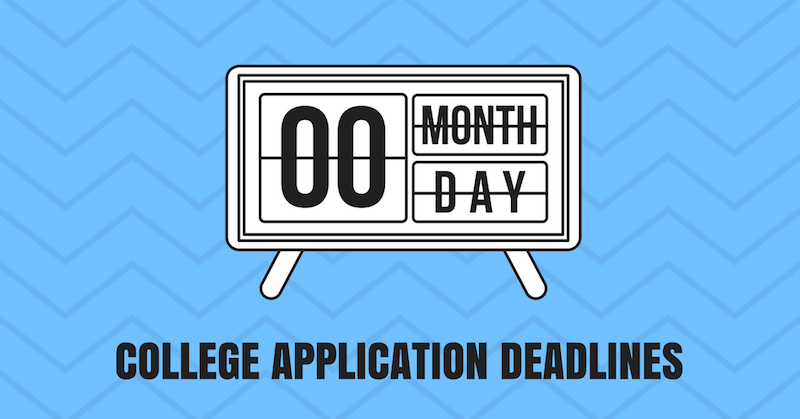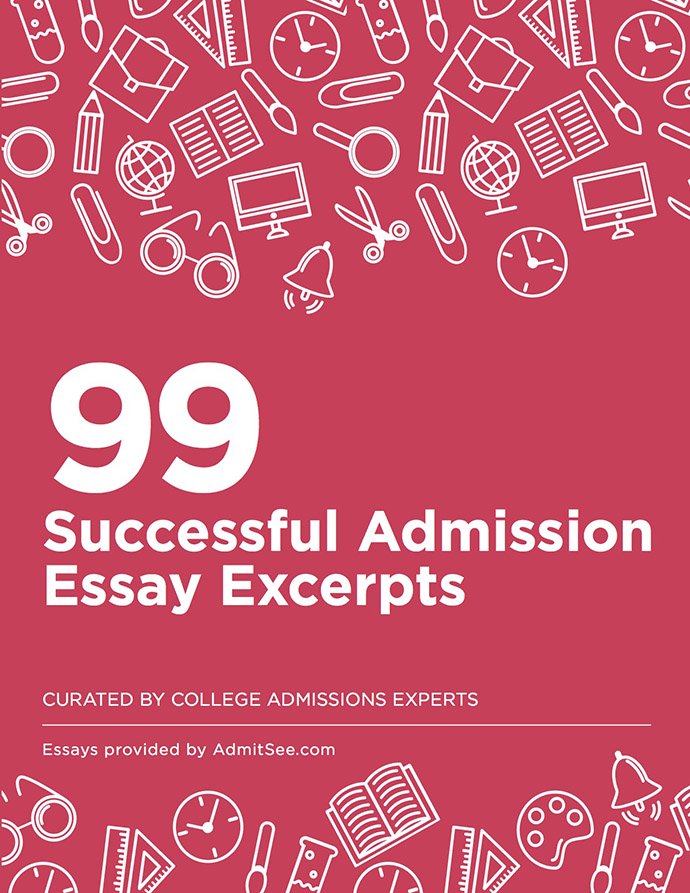Rising seniors, listen up! The #1 regret of most college applicants was not managing their time enough when applying to college. If you haven’t already, familiarize yourself with these major deadlines coming up.

There are over 2,000 four-year universities in the US, so it shouldn’t come as a surprise that there are a lot of deadlines you should be aware of. Different schools have different sets of application requirements and due dates. For the most part, most applications fall into the following six categories that you should be aware of:
1. Scholarship Application Deadline
Are you aiming for a merit-based scholarship? If you are, you should get started on your applications early. For most universities, merit-based scholarships will require additional essay requirements, a specific interview process and an early application deadline. There is more for you to get done and less time for you to do it. Build your college list and check to see if those colleges offer merit-based scholarships and when their deadlines are.
Here are a few deadlines you should be aware of:
USC Trustee Scholarship Deadline: December 1st
Emory Scholars, Oxford Scholars, Goizueta Scholars: November 15th
Morehead-Cain Scholarship: October 15th
BU Trustee Scholarship: December 1st
2. Early Action Application Deadline
Common Deadlines: November 1st, November 15th, December 1st
Particularly interested in a school? Apply Early Action. The Early Action program gives you the opportunity to express interest in one or more university that offer the EA program earlier than the rest of the applicant pool. Having said that, not all schools will let you apply EA to multiple schools. A few selective schools like Yale or Princeton have something called Single Choice Early Action or Restrictive Early Action, which means you are only allowed to apply EA to one school only. Keep in mind that if you are accepted Early Action, restrictive or not, you are not obligated to enroll. You will still have the opportunity to apply to more schools during Regular Decision, and do not have to commit until the enrollment deadline on May 1st.
The most common EA deadline is November 1st. If there is a school that stands out a little more than the rest of your college list, consider the EA application. Make sure you get started early on your application materials, and get your SAT or ACT out of the way during the summer, because once senior year kicks in, you’ll be really busy.
3. Early Decision Application Deadline
Common Deadlines: November 1st, November 15th, December 1st
Have a dream school you can’t stop talking about? In that case, Early Decision might be the application deadline you should shoot for. Similar to Early Action, the ED application allows your express additional interest to the university you’re applying to. With applying ED, that additional interest goes the extra mile: if you’re accepted, you are guaranteed to enroll in the fall. So, if you choose to ED, make sure it is a school you can really see yourself at for the next 4 years.
4. Early Decision II Application Deadline
Common Deadlines: January 1st, January 10th
What’s the difference between Early Decision and Early Decision II? Honestly, not much. The only difference is the timeline. The ED application deadline is usually around November 15th, and you hear back mid-December. With Early Decision II, you need to submit your application by January 1st, and will find out mid-February.
Here’s everything you need to know about Early Decision II to help you know all your options.
5. Regular Decision Application Deadline
Common Deadlines: January 1st, January 10th
Regular decision is the main application deadline for most universities, and the one that you should be most aware of. As a rising senior, you have about 7 months ahead of you before this major deadline. While it does seem like a lot of time right now, keep in mind of this application checklist:
And, those are just the major things! There are so many other little parts of the application that tend to add up. While this list is also true for early applications, you’ll probably be working on 5-7 applications for the regular decision deadline, which is a lot more than the one application you’ll be working on for EA or ED.
College Search/Tour: Building your college list
Taking the SAT/ACT
Taking the SAT II
Personal Statement Essay(s)
Supplemental Essay(s)
Scholarship Search
Scholarship Essay(s)
FAFSA application
Recommendation letters
6. Rolling Admission
Last but not least, there are also schools that have rolling admission. What does that mean? It means that technically there is no deadline. Once rolling admission opens up in September, you can submit your application whenever you are ready. While this option seems extremely lenient, it doesn’t mean you should take your time with your application.
Universities that offer rolling admission review applications as they are submitted. Students are accepted as applications are received and the university will do so until all the spots are filled. Since applications are reviewed as they are submitted, the earlier you apply, the less competition you’ll have. So, while you may have more time to work on your applications, don’t wait too long to get started!
Need help with your applications? Our premium plans offer different levels of profile access and data insights that can help you get into your dream school. Unlock any of our packages or search our undergraduate profile database to find specific profiles that can help you make an informed choice about where to apply! We have 60,000+ successful college application files uploaded by college students. See how they got in, and how you can too!
















 Back
Back